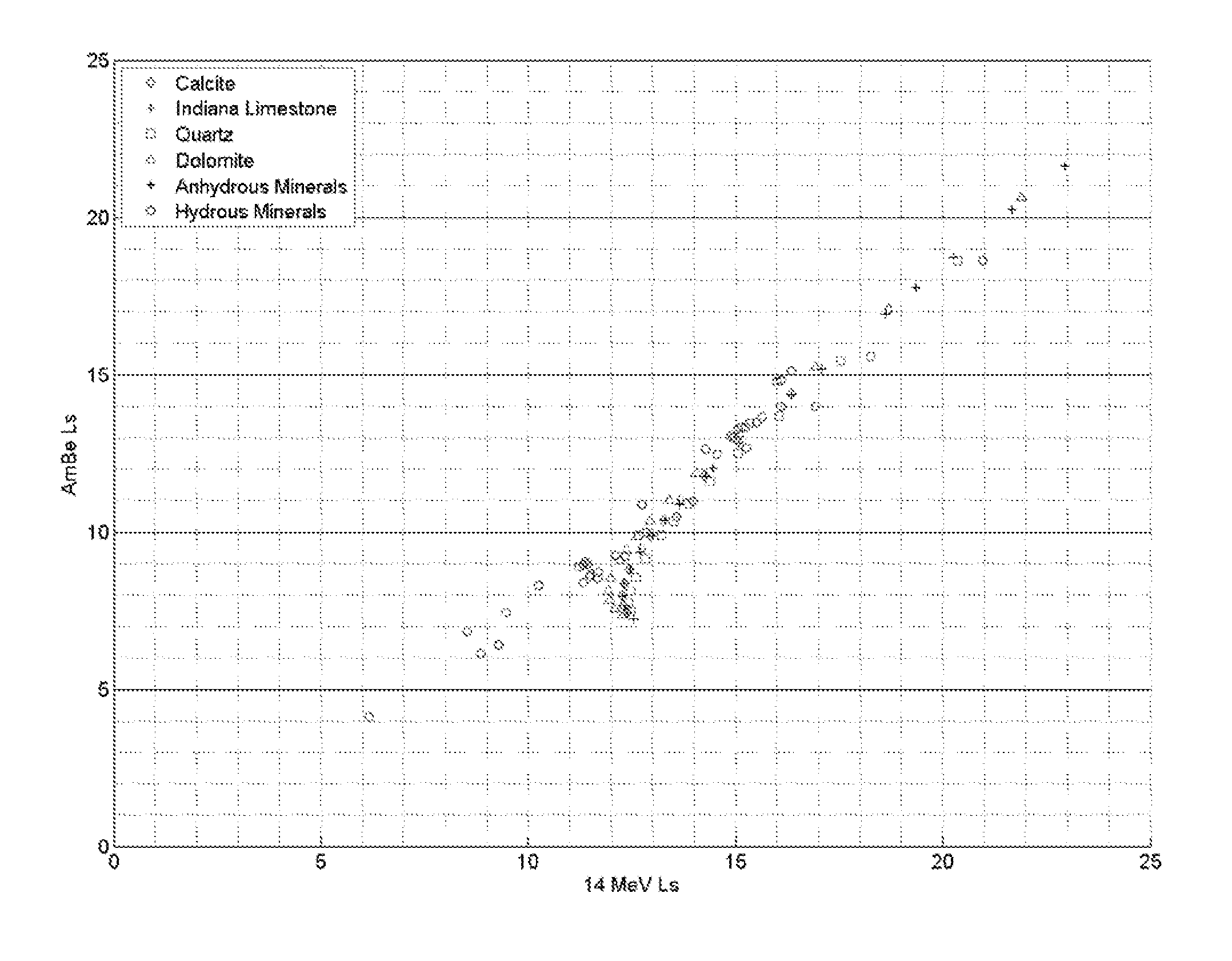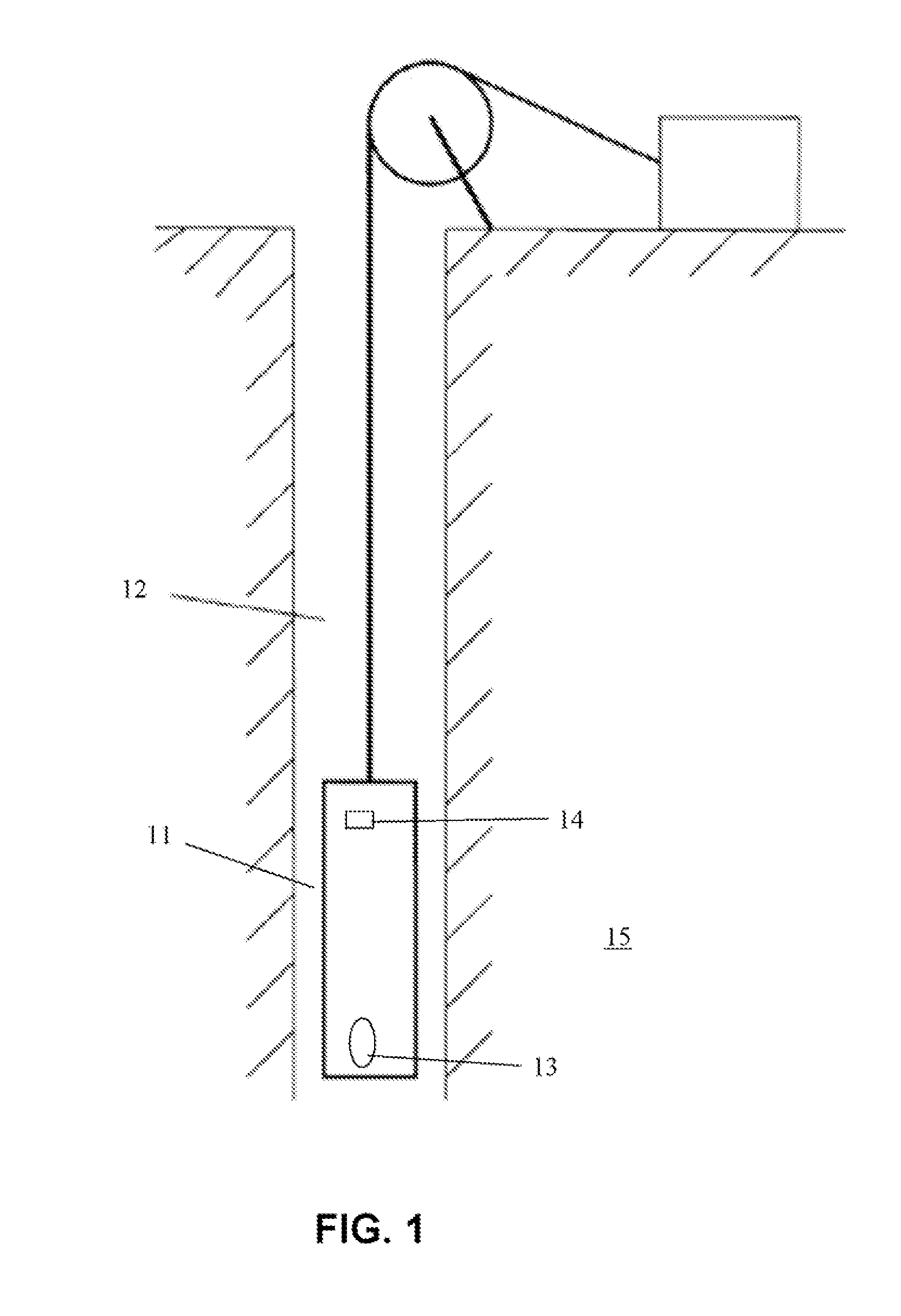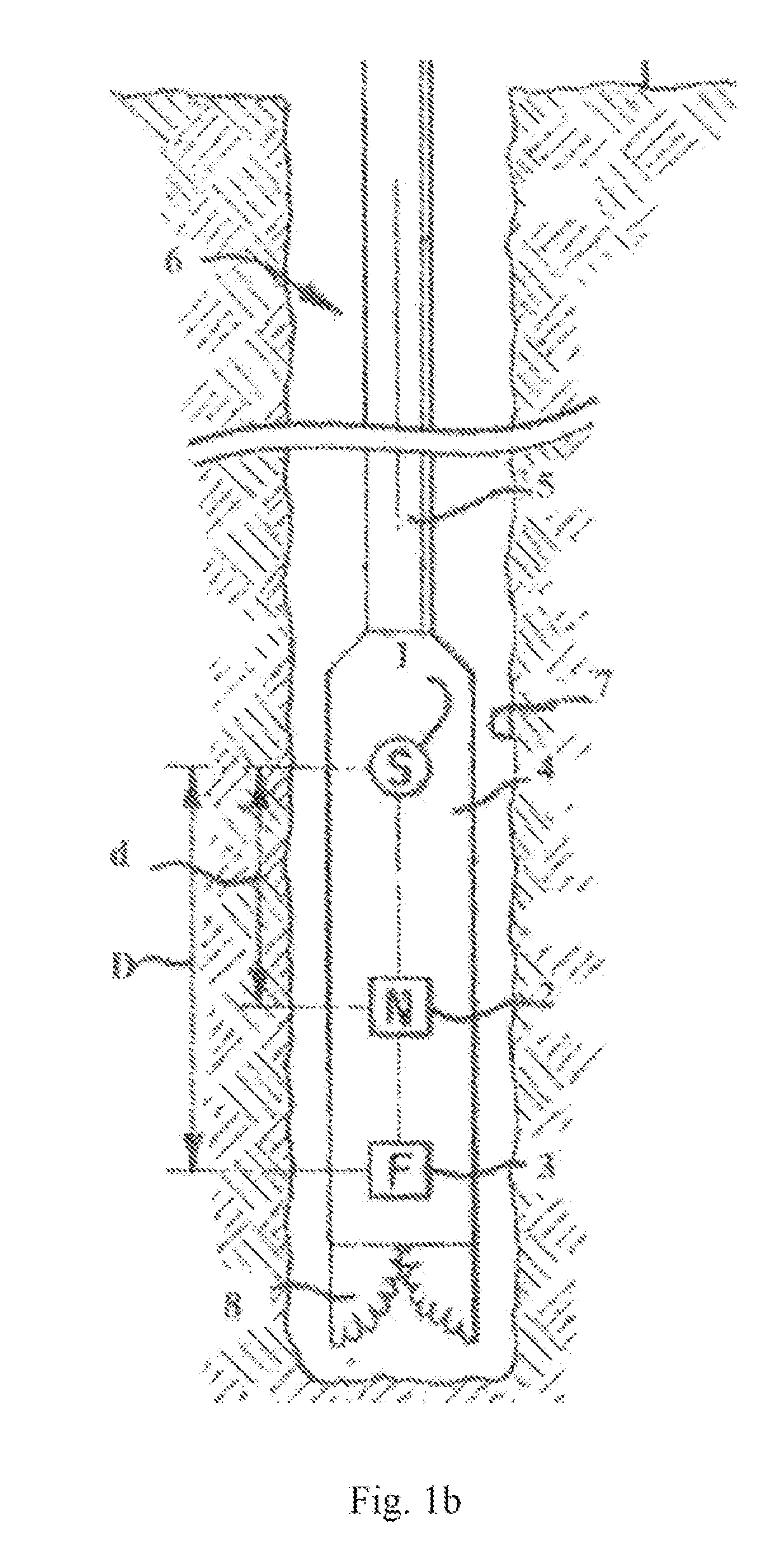Thermal neutron porosity from neutron slowing-down length, formation thermal neutron capture cross section, and bulk density
a technology neutron slowing down, which is applied in the direction of measurement devices, nuclear radiation detection, instruments, etc., can solve the problems of less desirable chemical sources, less common use of thermal neutron porosity measurements obtained with chemical source tools, and interference of borehole fluids with neutron measurements
- Summary
- Abstract
- Description
- Claims
- Application Information
AI Technical Summary
Benefits of technology
Problems solved by technology
Method used
Image
Examples
Embodiment Construction
[0024]Embodiments of the invention relate to methods for converting measurements made with a first tool into corresponding desired measurements that would have been made if a second tool were used. The first tool and the second tool may have different neutron sources and / or different neutron detectors. Different neutron sources, for example, may include AmBe, californium (Cf), dueterium-deuterium (DD) neutron generator, and deuterium-tritium (DT) neutron generator. Different neutron detectors, for example, may include thermal neutron detectors, epithermal neutron detectors, and fast neutron detectors.
[0025]For example, methods of the invention may be used to derive traditional thermal neutron porosities from epithermal neutron measurements made with electronic source neutron tools. As noted above, some modern neutron tools use electronic neutron sources that emit neutrons at higher energies. Some of these tools are designed to measure epithermal neutrons that return from the formati...
PUM
 Login to View More
Login to View More Abstract
Description
Claims
Application Information
 Login to View More
Login to View More - R&D
- Intellectual Property
- Life Sciences
- Materials
- Tech Scout
- Unparalleled Data Quality
- Higher Quality Content
- 60% Fewer Hallucinations
Browse by: Latest US Patents, China's latest patents, Technical Efficacy Thesaurus, Application Domain, Technology Topic, Popular Technical Reports.
© 2025 PatSnap. All rights reserved.Legal|Privacy policy|Modern Slavery Act Transparency Statement|Sitemap|About US| Contact US: help@patsnap.com



